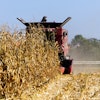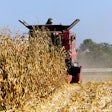
The U.S. Department of Agriculture's latest export sales report, covering the period from November 29 to December 5, 2024, reveals a mixed performance across various agricultural commodities. The data highlights significant shifts in global demand and trade patterns for key U.S. agricultural exports.
Key highlights from the report include:
Corn Exports Surge: Corn exports reached a marketing-year high of 1,183,400 metric tons (MT), up 13% from the previous week and 28% from the prior 4-week average. Major destinations included Mexico, Japan, and Colombia.
Wheat and Soybean Sales Decline: Wheat net sales of 290,200 MT for 2024/2025 were down 23% from the previous week, while soybean sales of 1,173,800 MT decreased by 49%.
Cotton Market Fluctuations: Upland cotton sales totaled 153,000 running bales (RB) for 2024/2025, down 10% from the previous week, with Vietnam and Pakistan as top buyers.
Meat Exports Show Resilience: Beef net sales of 11,000 MT for 2024 increased significantly from the previous week, while pork sales of 22,500 MT decreased by 36%.
Rice Exports Slow: Net sales of 44,700 MT for 2024/2025 were down 46% from the previous week, with unknown destinations and Mexico as primary buyers.
The report underscores the dynamic nature of global agricultural trade, with factors such as changing international demand, weather conditions, and geopolitical events influencing export patterns. Notable shifts include strong corn demand from traditional markets and fluctuating interest in U.S. cotton and meat products.
China remains a significant player in U.S. agricultural exports, particularly for soybeans and cotton. However, the report indicates varied demand across different commodities, reflecting the complex nature of international agricultural trade.

















